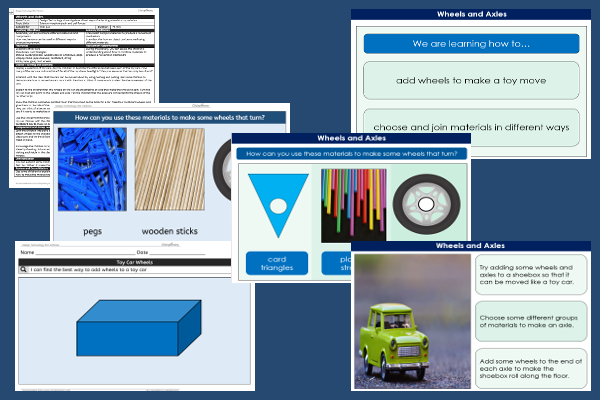Lesson Three – Wheels and Axles

This design technology teaching pack for Key Stage One gets the children to investigate, describe and test a range of special ways of attaching wheels to toy vehicles to produce movement when working with different materials.
The class can explore and model ways of combining a selection of materials to make axles to support the wheels on a toy vehicle to produce movements.
Download this teaching pack including a lesson plan, classroom activities and an interactive presentation to investigate, describe and test a range of special ways of attaching wheels to toy vehicles to produce movement when working with different materials
Activities in this teaching pack include display posters to explain and describe how to produce a movement mechanism on a toy vehicle and a template to select and record how to add wheels to a model when producing a movement mechanism to produce a forwards or backwards action.
The interactive presentation can be used to explore how to test a range of different ways of attaching wheels to toy vehicles to produce movement.
This lesson is part of a design technology scheme of work to get the children to select and combine a range of different materials to make a model of a toy vehicle with a movement mechanism to match chosen success criteria. There are teaching activities for shared learning, differentiated worksheets to support independent learning and interactive presentations to introduce concepts and key skills.
-

Maths Measurement Assessment
Assess abilities in estimating, measuring and comparing a range of different measurements for length, mass and capacity
-

Family Life
Investigate and reflect on some of the special events and experiences that might happen in the life of a family
-

Final Sounds Word Guess
Practise playing some guessing and matching games to identify the spelling and meaning of words with different final sounds
-

Building Reports
Explore how to collect facts and information to work with when composing and presenting non-chronological reports about buildings that can be found in the local area
